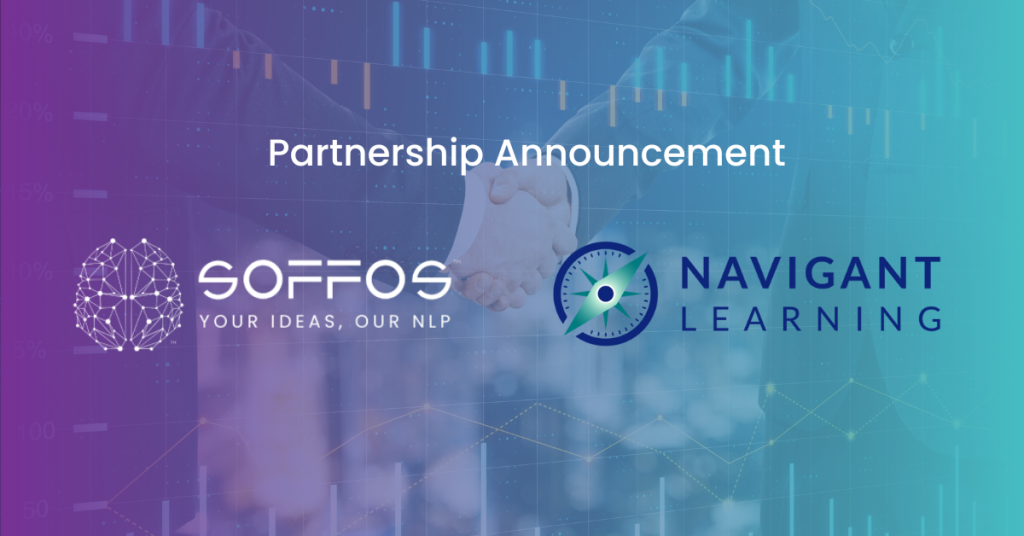The transformative power of AI is a hot topic across all industries and sectors worldwide. With a keen interest in the intersection of AI and education, Navigant Learning and Soffos embarked on an exploratory journey to understand the role of AI in enhancing learning and development (L&D). Our goal was to discover how AI for instructional design and content development can support better training programs and address the urgent skilling needs of the global workforce.
Our objective was to deep dive in the learning lifecycle using AI tools to identify opportunities for L&D organizations to adopt AI-driven methodologies to expedite and expand learning, thereby increasing the output of L&D programs which in turn, can help narrow the widening skills gap and solve challenges in meeting organizational learning needs.
First…Our (highly summarized) perspective on learning automation
A quick note on our perspective on AI for learning: The global skills gap is widening, placing learning at the forefront of shaping the future of work and unlocking new human and business potential. Learning organizations are under-funded, and generally are not able to keep up with the new skilling demands of the world. As a result, organizations lack the critical new and emerging skills needed to deliver on rapidly changing business objectives. We believe that leveraging AI throughout the learning lifecycle will allow L&D professionals to address evolving needs comprehensively, building better training experiences, at speed and scale with better price points to ultimately close the gap. To do this effectively, AI tools should be viewed with the goal of augmenting human capability, not replacing.

Here’s a high-level overview of our methodology, current findings, and our vision for the future of learning.
Our Approach
Our experiment was structured around the ADDIE lifecycle, with a focus on Level 2 activities to accurately gauge the effectiveness of AI tools across the end-to-end learning
development lifecycle. We developed a hypothesis-driven heatmap to guide our efforts and select the most appropriate AI tools.
- Defined the ADDIE model Level 2 setup and our hypotheses for AI impact.
- Established parameters and scenario assumptions.
- Conducted the course development experiment using the Soffos Generative AI platform.
- Tracked and monitored results, both quantitative and qualitative.
- Modeled impacts and outlined potential future applications.
Our experiment aimed to create a robust, interactive training course while determining both the quantified and qualified implications of AI. For the initial trial, we developed standard Instructor-Led Training (ILT) 1-hour courses using a 36:1 baseline development ratio. We then mapped the AI implications at a L2 across the ADDIE model to calculate the time acceleration and how AI may increase effectiveness.
The Soffos platform is robust and well established for instructional design and L&D use cases and stands out because it offers a suite of specialized modules, not just a generic prompting tool. Modules particularly beneficial for L&D include micro-lesson creation, Q&A generation, and tag generation.
Summarized Findings
For the standard course set, we observed a total time-saving acceleration of 41%. This acceleration was primarily seen in the Design and Development phases, with some Level 2 steps speeding up by more than 80%. The most significant time reduction occurred during the High-Level Design Document creation, which achieved a 90% acceleration. Summarized key findings that we’ll explore further in our coming research include:
- Significant time savings throughout the L&D lifecycle when strategically using AI.
- Data-driven efficiencies and accuracy improvements in the design stages.
- Enhanced accessibility and inclusivity of information.
- Shifted focus towards more strategic learning activities, especially planning.
- AI works more effectively WITH humans rather than as a replacement.
Conclusion
AI serves as a complement to human L&D efforts, accelerating most steps in the learning development lifecycle and better equipping organizations to fulfill the demand for learning solutions. While these are early days, further integrations and automation, particularly in production steps, will continue to unlock new possibilities.
Leaders and organizations should regard AI tools as a means to deliver enhanced learning experiences with greater scale and speed, addressing today’s dynamic learning requirements, NOT merely as a cost-cutting measure. The initiative and direction must originate from the top, with leaders who are well-informed and educated about AI and education.
Looking forward, we anticipate that additional automation and integrations will further streamline the process.
The goal for L&D organization should not be to reduce the number of L&D practitioners but to reallocate their time towards strategic, planning, and design activities. By scaling content to align with role and skill-based learning paths, we can create superior learning experiences, upskill the workforce more rapidly, and address the significant gaps in effective learning that currently exist.
Stay tuned for more detailed insights from our AI-driven experiments in the field of L&D.
Follow us to see more detail on our AI-driven experiments in learning.
Explore the Soffos Platform today and get $50 in free trial credits. No credit card required.






